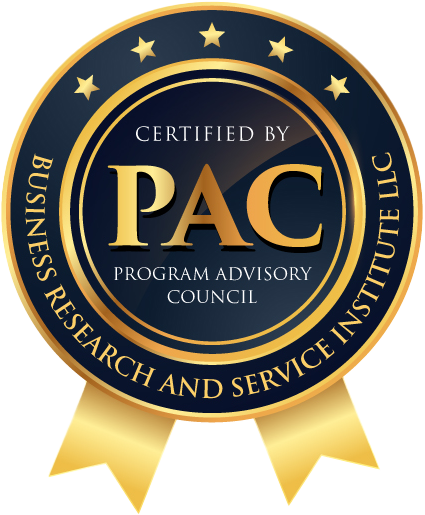Production Planning and Scheduling are essential components of manufacturing and operations management. They play a critical role in ensuring that production processes run efficiently and meet customer demand on time. Understanding these concepts is vital for optimizing resources, controlling costs, and delivering products within the required timelines.
What is Production Planning?
Production planning is a strategic process to determine the most efficient way of manufacturing. It involves different steps to meet customer needs on time like forecasting demand, coordinating resources, and setting a production schedule . Production planning minimizes costs by optimizing the use of materials, labor, and machinery without compromising the efficiency. This process ensures that production aligns with market demands, balancing supply with customer expectations. Resultantly it drive operational success and profitability in a competitive market.
Types of Production Planning
Production planning encompasses various methods to optimize manufacturing processes, each suited to different production needs. The Job Method focuses on creating custom products tailored to individual customer specifications, ideal for bespoke items. The Batch Production Method groups identical products for production, balancing efficiency and flexibility.
The Flow Method, or mass production, involves continuous, streamlined manufacturing of standardized items, ensuring high efficiency. For industries like chemicals and food, the Process Method offers continuous, unchanging production, maintaining consistent quality. Lastly, the Mass Production Method leverages automation and assembly lines to produce large volumes of standardized goods efficiently. Each method addresses unique manufacturing challenges, ensuring optimal resource utilization and meeting diverse production demands.
Production Planning Process
The Production Planning Process is a critical step in ensuring manufacturing efficiency and effectiveness. It begins with calculating product demand.
Once demand is estimated, the next step is to evaluate production alternatives. This involves assessing different manufacturing methods and selecting the most cost-effective and efficient approach.
After considering all options, it’s crucial to select the most effective solution that aligns with production goals and resource availability. Monitoring and evaluation follow, where ongoing production is tracked to ensure it meets set standards and objectives.
Based on these evaluations, it’s often necessary to adjust the plan, making refinements to improve efficiency and address any issues that arise.
Components of Production Planning
Effective production planning is all about coordinating key elements to keep manufacturing smooth and efficient. It starts with the Bill of Materials (BOM), which lists everything needed to make a product. Keeping accurate stock levels is crucial to avoid running out or having too much on hand, ensuring production isn’t disrupted.
Keeping an eye on material prices helps manage costs and stick to budgets. Figuring out the best lot sizes balances efficiency and inventory costs. Lastly, calculating manufacturing lead time, the total time from start to finish, helps set realistic schedules and meet delivery deadlines. All these elements together make a solid production plan.
What is Production Scheduling?
Production scheduling is all about arranging and fine-tuning the order of tasks in manufacturing to keep everything running smoothly. It means figuring out what needs to be made, when it should be done, and which machines will do the work. Good scheduling makes the most of resources, cuts down on production time, and ensures deadlines are met. This key part of production planning brings together materials, workers, and equipment to boost productivity and lower costs, making sure products are ready when needed.
Difference Between Production Planning and Scheduling
Production planning and scheduling are distinct yet intertwined processes. Production planning involves determining what products to make, in what quantities, and by when, considering resources and demand forecasts. It sets the strategic roadmap for production activities. Scheduling, on the other hand, is the tactical execution of this plan, allocating specific tasks to specific time slots, machines, and workers. While planning focuses on the ‘what’ and ‘when’, scheduling addresses the ‘how’ and ‘who’, ensuring efficient workflow and timely delivery.
Importance of Production Planning and Scheduling
Production planning and scheduling are pivotal for manufacturing success, ensuring seamless operations and strategic growth. By meticulously planning and scheduling, businesses can meet customer demands promptly, thereby enhancing customer satisfaction and loyalty. These processes enable optimal resource utilization, reducing waste and maximizing efficiency. Effective planning contributes to cost control, allowing businesses to manage budgets and lower production expenses.
Improved production efficiency ensures a streamlined workflow, minimizing downtime and boosting productivity. Timely decision-making is facilitated by real-time insights into production activities, leading to swift responses to changes. Enhanced coordination and collaboration across departments foster a unified approach to achieving goals. This structured approach supports scalability and growth, allowing businesses to expand operations smoothly while embracing continuous improvement for sustained success.
Stages of Production Planning and Scheduling
The stages of Production Planning and Scheduling are integral to optimizing manufacturing efficiency. Demand Forecasting and Capacity Planning form the foundation by predicting future demand and ensuring that production capacity can meet this demand. Next, Material Planning and Procurement ensure all necessary materials are available to avoid delays. Scheduling and Resource Allocation involve creating a detailed timetable and assigning resources to specific tasks, ensuring a smooth workflow.
Production Control and Monitoring track progress in real-time, allowing for adjustments to maintain efficiency. Finally, Master Production Schedules integrate all these elements into a cohesive plan, aligning production activities with business goals and customer needs. This comprehensive approach ensures timely, cost-effective production, meeting market demands efficiently.
Key Factors to Consider When Scheduling Production
When scheduling production, several key factors are essential for efficiency and success. Effective crew management ensures that the right skills are available when needed. Running at capacity maximizes productivity without overburdening resources. Ensuring the timely availability of raw materials prevents delays. Workshop logistics must be optimized for smooth workflow and minimal disruptions.
Problem-solving capabilities are crucial for addressing unexpected issues swiftly. Understanding and leveraging your manufacturing processes ensures that each step is optimized for speed and quality. By balancing these elements, production scheduling can meet demands, reduce costs, and enhance overall operational efficiency.
Production Planning KPIs
Key performance indicators (KPIs) in production planning are essential for measuring efficiency and productivity. Manufacturing costs track expenses to ensure profitability. The capacity utilization rate measures how well production resources are used. Comparing planned production vs. actual hours reveals scheduling accuracy. Employee utilization (productivity) gauges workforce efficiency, ensuring optimal performance. Takt time aligns production speed with customer demand, balancing workflow. Together, these KPIs provide a comprehensive view of production efficiency and areas for improvement.
How to Make a Production Schedule
Creating an effective production schedule involves several crucial steps. First, estimate customer demand to understand how many products are needed. Second, measure production capacity to meet this demand. Then, make a production budget to allocate resources effectively. Optimize production routing to streamline processes and minimize delays. Finally, schedule production activities meticulously to ensure a smooth workflow. By integrating these steps, you can enhance efficiency and meet customer expectations seamlessly.
Production Scheduling Techniques
Production scheduling techniques ensure efficiency and adaptability in manufacturing. Forward Scheduling plans tasks from the start date forward, while Backward Scheduling works from the deadline backward. Make-to-Order Production Scheduling customizes production based on specific orders, contrasting with Make-to-Stock, which maintains inventory levels. Finite Capacity Scheduling (FCS) considers resource limitations for realistic planning, unlike Infinite Capacity Planning, which assumes unlimited resources. Employing these methods allows businesses to meet demand, optimize resources, and maintain flexibility in production.
How to Optimize Production Scheduling
To optimize production scheduling, start with Demand-Driven Scheduling to align output with market needs. Utilize Advanced Scheduling Techniques and Minimize Changeovers and Setup Times for efficiency. Implement Real-Time Monitoring to track progress and Optimize Resource Allocation. Prioritize Critical Tasks while considering Production Constraints. Embrace Technology to enhance precision, and Implement Lean Manufacturing Principles to reduce waste. Finally, focus on Continuous Improvement to refine processes, ensuring a responsive and agile production environment.
Common Production Planning and Scheduling Mistakes
Common Production Planning and Scheduling mistakes can severely impact operations. Inaccurate demand forecasting leads to overproduction or stockouts. Insufficient capacity planning and poor material planning cause bottlenecks and delays. Inefficient scheduling wastes resources, while lack of flexibility hinders adaptation to changes. Ignoring feedback and continuous improvement stifles growth, and lack of communication and collaboration creates silos, further hampering efficiency. Addressing these issues is crucial for smooth and efficient production processes, ensuring optimal resource utilization and meeting customer demands.
Production Scheduling Software
Using software can greatly enhance production scheduling:
- Make Detailed Production Schedules with Gantt Charts: Visualizing schedules to manage tasks effectively.
- Create Production Workflows With Kanban Boards: Using boards to streamline production processes.
- Track Resource Utilization With Timesheets and Workload Charts: Monitoring resource usage to optimize efficiency.
Conclusion
This structure provides a comprehensive guide to production planning and scheduling, covering definitions, processes, techniques, key factors, common mistakes, and tools, ensuring the reader gains a thorough understanding of the subject.

Aftab Khan is a logistics specialist with over forty years of experience in all aspects of supply chain and logistics management. He is an engineer by training and holds an MBA, besides several certifications from APICS/ASCM, ISCEA, and BRASI. Mr. Khan is the Executive Director of Business Research and Service Institute LLC, USA.








